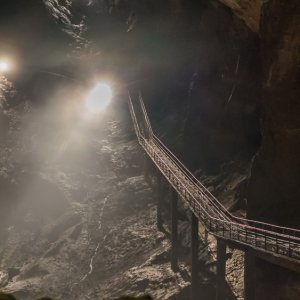
Tailings Management: It Is Time to Take Action
 By Andrea Villar | Editorial Manager -
Thu, 08/26/2021 - 13:52
By Andrea Villar | Editorial Manager -
Thu, 08/26/2021 - 13:52
You can watch the video of this panel here.
Tailings management has long played a fundamental role in the mining industry. Nevertheless, in the last few years, dam management and its high costs, not only pose great risks to the environment and its surrounding communities, but can also affect the lives of hundreds of people. Today, they have taken a central role in mining projects.
Since the Samarco tailings dam failure in 2015, similar situations such as the 2019 Brumadinho dam disaster in Brazil, which killed more than 270 people, regulators, governments and investors have paid a closer attention to the mining industry, says Adrian Juarez, CEO of CTA Consulting. This has led to enforce further restrictions on dam construction and the launch of more robust standards, such as the Global Industry Standard for Tailings Management (GISTM) approved by the International Council on Mining and Metals (ICMM) published in 2020.
Norbert Morgenstern, a geotechnical engineer at the University of Alberta, in charge of leading the investigations into Samarco’s Brazilian failure in 2015, has identified that faulty engineering, including inadequate scrutiny of the underlying geology, has stood at the core of all, but two major tailing incidents between 1980 and 2015. According to a report from Scientific Publisher Hindawi, of the 18,000 mines around the world, the failure rate in the past 100 years is estimated at 1.2 percent, while on average, three of the world’s 3,500 tailings dams fail every year.
Newmont, the world's leading gold company and operator of the Peñasquito mine in Mexico, is in the process of making changes to its tailings management system in order to effectively implement the objectives of the global industry standard on tailings management, said Briana Gunn, Group Executive of Environment at Newmont. “We believe this will set us apart from other companies in the industry”, she adds. “It is our belief that the GISTM really raises the bar for integrating social, environmental, economic and technical considerations, elevating accountability and really strengthening oversight and governance.”
Newmont, which is also part of the International Council on Mining and Metals, argues that prior to the GISTM, many companies had robust standards in place for tailings management, including Newmont. However, this new standard provides a level of consistency and attempts to raise the bar on how tailings are managed for all companies worldwide. “We really support having guidance out there for companies to be able to implement this,” Gunn says. “The industry has to move forward to safeguard lives, the environment and the design operation and closure of tailings facilities and the GISTM is a great step in that direction.”
In Oaxaca, Minera Cuzcatlán has been operating for 10 years. In the past, the mine operated a conventional tailings dam and a small plant that produced 800 tonnes per day of silver concentrates containing gold. As the years passed and production increased, the company recognized the critical role of better tailings management, said Patricia Gonzalez, Plant Manager at Minera Cuzcatlan, the mining subsidiary of Fortuna Silver Mines.
Today the company produces 3,000 tonnes per day and has migrated from a conventional tailings dam to filtering its tailings and a dry tailings deposit. "With this change, we have improved our water management," says Gonzalez. Because the company's tailings contain carbonates and clays, they naturally retained water, which was "not sustainable" in the long term. Now the operation recirculates 96 percent of the water used at the plant and the remaining water lost in the wet tailings is recovered by a wastewater treatment plant.
In tailing management, the filtration process can have a really big impact, adds Sandrine Forsoni, Corporate Market Manager for Minerals at Sefar. “Filtration is a crucial step in dam management and we know the risks of tailings are increasingly high”, she explains. “All of them are different and there is no one size fits all approach to this matter.”
According to Science Magazine, one of the main reasons why mining dams fail is liquefaction, which in extreme cases, water combined with stress such as an earthquake can cause an earthen dam to suddenly turn into liquid. Likewise, a risky design, which relies on raising the dam gradually as tailings accumulate, poses a risk because it solely depends on the tailings below to support the entire load. Also, geological vulnerabilities in the ground beneath a dam can make it prone to failure.
A preventive approach that has taken off in recent years is stewardship reviews by third-party engineers, says Chris Koutsaris, Sales Manager for Process Technology and Equipment for Takraf. Koutsaris says a key role at this stage is that of the engineers on the field, who must be allowed to take action as soon as a problem occurs. He adds training and a continuous coaching of employees and clear work constructions, although costly for the company, is the necessary path to take in order to achieve better tailings management.
















